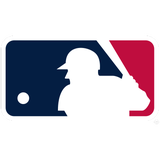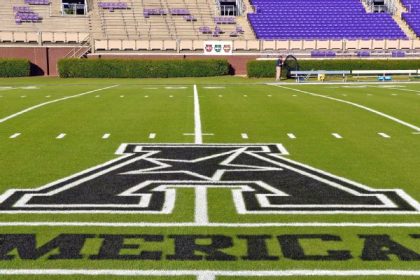While some in baseball take a wait-and-see approach to next season’s rule changes, Diamondbacks manager Torey Lovullo is being proactive.
The main changes coming in 2023 — a pitch timer, defensive shift restrictions, larger bases and a limit on pick-off attempts — are being implemented in an effort to speed up pace of play, increase action and promote athleticism.
It’s with those new rules in mind that Lovullo went about preparing his infielders this winter.
Next season, two infielders must be positioned on each side of second base when the pitch is released, and all four infielders must have both feet in the infield when the pitcher is on the rubber. Infielders can no longer switch sides of the field unless a substitution is made.
It is not an entire elimination of the shift, but it does provide more stringent rules about defensive positioning. No longer will you see a third baseman in short right field.
Offensively, it will be a welcomed sight for left-handed hitters accustomed to losing base hits on hard-hit grounders through the right side of the infield. Defensively, it will require more work for second basemen accustomed to getting extra help.

Beginning with the 2023 season, MLB requires two infielders to be positioned on each side of second base and all infielders to have both feet in the infield when the pitcher is on the rubber. (Photo by Rob Carr/Getty Images)
Most managers and executives at the winter meetings spoke positively about the changes, though they varied in how much of an impact they expect the new rules to make. Specifically in regard to shift restrictions, Lovullo is among the managers anticipating a rise in offensive production and an emphasis on athleticism in the field.
“I already have asked our guys to go in and prepare themselves from the waist down if you’re an infielder because you’re going to have to go out and get the job done on a much bigger scale,” Lovullo said.
Lovullo relayed that message to Ketel Marte when he visited his second baseman in the Dominican Republic in November while on a trip to see the Diamondbacks’ baseball academy. He wanted Marte focusing on his agility and lateral movements to prepare for spring training.
“‘You need to get strong from the waist down,’ was my defensive message,” Lovullo said. “I think for us to win inches and do what I expect us to do defensively, we need to have every infielder, including Ketel, be as dynamic as possible with their left and right movements to cover that ground.”
Reds manager David Bell was also among the skippers who expect the rule changes to have noticeable consequences. He views those changes positively and has enjoyed trying to figure out how to turn the new rules into an advantage, even if the ramifications might take time to fully grasp.
“Our team will evolve over time, but like right now, it’s, ‘How can we prepare our team the best way we can?’” Bell said. “No. 1, it’s really understanding the rules. It’s talking to people in player development that have experienced them, creating practice strategies around that.”
Twins manager Rocco Baldelli said he’ll have to manage in ways he hadn’t thought about before, but he also echoed Bell in believing the changes will better the game.
Teams will get the chance to see the new rules in action during spring training, a time Rockies manager Bud Black said will be crucial.
“We’ll have a whole month of games and daily discussions about this,” Black said, “and try to simulate some things even prior to games both on the pitching side and the position-player side as far as the pitch clock.”
While baseball purists might quibble about the changes, most major-league managers sound open-minded. It helps that they’ve seen the changes — and the results — at the minor-league level.
“You can’t just keep playing the same game that they played in the 1940s and 1950s,” Mariners manager Scott Servais said. “It evolves. We have to evolve with it. The players will adjust.”
Beyond the defensive shift rules, these are the other three main changes coming to baseball next season.
Pitch Timer
The most noticeable difference next year will be the pitch timer, and managers are preparing all of their players for the change.
“I think we’re focused a little too much on pitchers with this subject,” Brewers manager Craig Counsell said. “I think the hitters are just as, maybe more, put to the test.”
According to Baseball-Reference, the average major-league game time peaked in 2021 at three hours and 11 minutes. It decreased last year, but it hasn’t dipped below three hours since 2015. Compare that with the early 2000s, when the average game length was 2 1/2 hours.
MLB saw a problem that needed fixing.
The pitch timer was implemented in the minors to experiment with pace of play. It helped reduce nine-inning minor-league games by 26 minutes on average.
“Pitch clock, I’m thrilled about,” said manager Kevin Cash, whose Tampa Bay Rays played in seven regular-season games of at least four hours and 23 games of at least 3 1/2 hours last season. “Speed the game up.”
Starting next season, pitchers will get 15 seconds between pitches when the bases are empty and 20 seconds with a runner on base. Batters must be in the box with at least eight seconds still remaining on the clock, and they get one timeout per plate appearance.
Like Counsell, Black said he thinks batters — who are accustomed to fixing their gloves, kicking their cleats and looking at the third-base coach — might have a tougher time adjusting to the rule than pitchers.

Among the new rules for the upcoming MLB season, batters will be allowed just one timeout per plate appearance. (Photo by David J. Griffin/Icon Sportswire via Getty Images)
The timer will provide slightly more leeway than the 2022 minor-league version, which was 14 seconds with the bases empty and 18 seconds with a runner on base (19 seconds in Triple-A). Violations result in an automatic ball for a pitcher or an automatic strike for a hitter.
“My guess is in April you’re going to probably see some incidents,” Guardians manager Terry Francona said. “It’s inevitable. Hitters are going to step out or somebody’s going to get a ball. There will probably be some, a few things, that happen.”
Braves manager Brian Snitker anticipates those adjustments being significant for veteran pitchers, particularly late in games in high-leverage situations.
“The guys we’ve brought up from the minor leagues, when they pitched, you could tell they were a product of that,” Snitker said. “And the one thing that they all said was that when you want to kind of reach back and regroup, you don’t have that ability with that pitch clock. And that might be something, I don’t know, that is going to be the big adjustment for guys.”
Bigger Bases
It’s no longer quite 90 feet between bases.
The sizes of first, second and third base will increase from 15 inches square to 18 inches square, reducing the distance between first and second base and between second and third base by 4.5 inches.
The goal is to encourage more aggression on the basepaths and to improve player safety, providing more space to touch the bags on close plays.
“I’ll be honest, I don’t know how big a difference it’s going to make,” Rangers manager Bruce Bochy said. “It may make them try to be more aggressive. But I think you’ll see pitchers get quicker to home plate, things like that.”
In 2021, there were 2,213 stolen bases. Compare that to 10 years prior, when there were 3,279 stolen bases.
“I don’t know what to expect from the bases,” Royals manager Matt Quatraro said. “But I think the pickoff thing is going to be something that I know I need to get comfortable with and how we decide to value those picks and how we can take advantage of it.”
Pickoff limit
The pickoff rule Quatraro referred to goes hand-in-hand with the pitch clock and larger bases, which were all changed in an effort to speed up the game and promote action.
Starting next year, a pitcher can only disengage from the rubber (stepping off or throwing over) twice per plate appearance without penalty.
“That’s really going to change the game,” Bell said.
If a pitcher steps off a third time and doesn’t record an out, it’s a balk. The disengagement count will reset if a runner advances.
“Your delivery being quick enough to home matters in this new world to conserve your pickoff attempts,” Counsell said. “So I think that could be the place where some pitchers get uncomfortable the most.”
The question now becomes how teams will go about trying to gain an edge.

Pitchers will be permitted to to step off the rubber and/or attempt a kickoff just two times per plate appearance moving forward. (Photo by Rob Carr/Getty Images)
Padres president of baseball operations A.J. Preller acknowledged there are undervalued players on the market who might stand to benefit from the new rules, but neither Preller nor Dodgers president of baseball operations Andrew Friedman sounded like the rule changes will impact the way they build their rosters in a meaningful way.
Friedman, however, does anticipate the pitch clock requiring some adjustments.
Last year, there were 110 qualified major-league pitchers who averaged at least 20 seconds between pitch releases. Keep in mind, that time varies slightly (about six seconds longer) from the pitch timer, which will begin when the pitcher receives the throw from the catcher and end once he starts his delivery.
Still, pitchers such as Jonathan Loáisiga, Giovanny Gallegos, Kenley Jansen and Kyle Finnegan, all of whom averaged more than 25 seconds between pitch releases last season, might find the new rules more irksome than most.
“I think there’s a great unknown of who’s going to be able to and who’s not,” Friedman said. “For some guys, it’s going to be easy. For others, it’s not.”
Pirates manager Derek Shelton and Nationals manager Dave Martinez expect younger teams to benefit from the new rules, both because minor-leaguers have played with them before and because they favor athleticism, speed and quickness.
It remains to be seen just how significant the impacts will be.
“We need to try to figure out how we can take advantage,” Shelton said.
Rowan Kavner covers the Dodgers and NL West for FOX Sports. He previously was the Dodgers’ editor of digital and print publications. Follow him on Twitter at @RowanKavner.
Top stories from FOX Sports:

Get more from Major League Baseball Follow your favorites to get information about games, news and more












